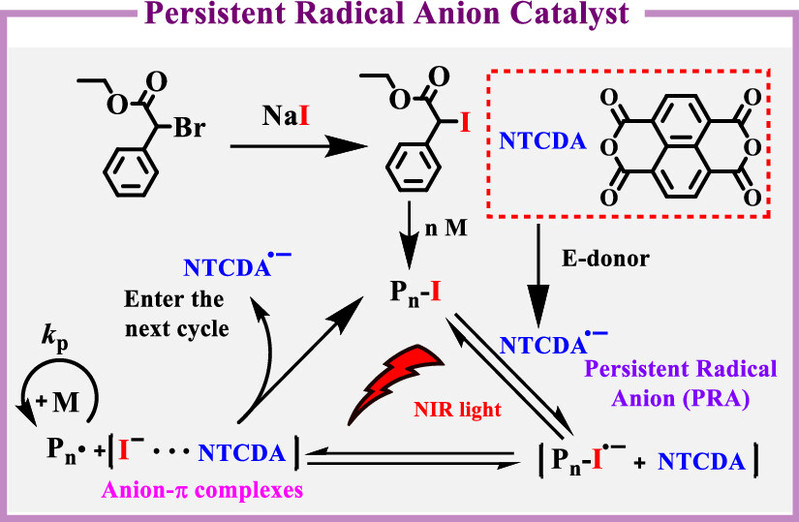Persistent Radical Anions: Efficient Catalysts for Iodine-Mediated Reversible-Deactivation Radical Polymerization Driven by NIR LED Light
Haitao Zhao1,2,3, Guoqing Bian2, Xiang Xu1,2,3,, Ran Liu2, Weiwei He4, Lifen Zhang1,2,3*(张丽芬), and Zhenping Cheng1,2,3*(程振平)
1State and Local Joint Engineering Laboratory for Novel Functional Polymeric Materials, Jiangsu Key Laboratory of Advanced Functional Polymer Design and Application, Soochow University, Suzhou 215123, China
2College of Chemistry, Chemical Engineering and Materials Science, Soochow University, Suzhou 215123, China
3Suzhou Key Laboratory of Macromolecular Design and Precision Synthesis, Soochow University, Suzhou 215123, China
4State Key Laboratory of Radiation Medicine and Protection, School of Radiological and Interdisciplinary Sciences (RADX), Soochow University, Collaborative Innovation Center of Radiological Medicine of Jiangsu Higher Education Institutions, Suzhou 215123, China
Macromolecules 2023, 56, 6328−6338
Abstract:Developing new catalysts with obvious advantages thanexistingones is charming but very challenging for near infrared (NIR)-photocontrolledreversible-deactivation radical polymerization (RDRP). Herein, a high-efficiencyNIR-photocontrolled bromine-iodine transformation RDRP (BIT-RDRP)system was developed by employing persistent radical anions (PRAs)as the catalysts. Specifically, some inherent electron deficient species,such as 1,4,5,8-naphthalenetetracarboxylic dianhydride (NTCDA), canbe reduced to PRAs in the presence of common reducing agents (e.g.,sodium ascorbate (SA)). Subsequently, the electron-donating PRAs activatethe carbon-halogen bonds of dormant species with the help of NIR lightand facilitate the formation of carbon-centered radicals (CCRs) toinitiate polymerizations. With the assistance of this catalytic system,a monomer conversion of more than 97.0% was achieved within 180-240min and the polymerization process was still controllable. In addition,several other types of PRA catalysts have also been developed forconfirming the catalytic mechanism. All PRAs exhibit highly catalyticability in the BIT-RDRP system, which opens up a direction for thefurther development of NIR-photocontrolled RDRP.

链接://pubs.acs.org/doi/10.1021/acs.macromol.3c00478